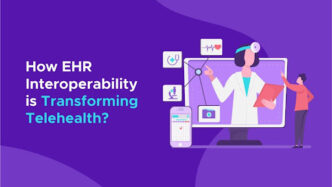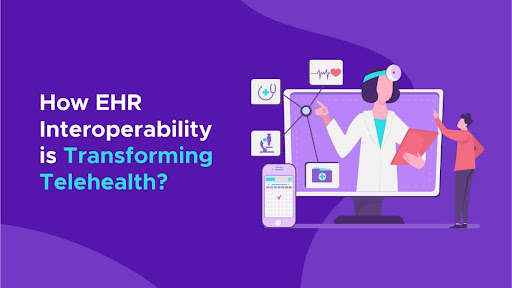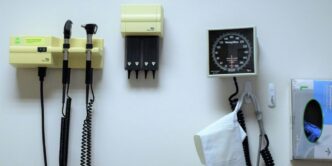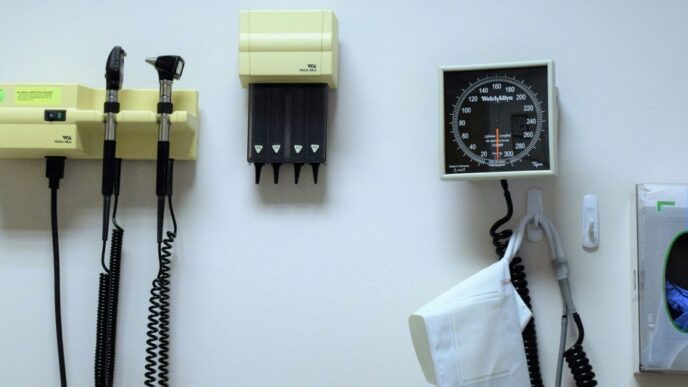The Evolution of Telehealth
Over the last few years, telehealth has moved from a supplementary service to a mainstream component of healthcare delivery. Today, remote consultations, virtual check-ups, and digital monitoring are widely accepted essential. The drivers behind this change include broader access to high-speed internet, the proliferation of smart devices, and a pressing need to make healthcare more accessible and cost-effective.
In 2024, the demand for telehealth has surged as healthcare providers strive to meet patient needs beyond traditional clinical settings. With telehealth, patients can consult with doctors from the comfort of their homes, rural communities can access specialized care, and healthcare systems can reduce waiting times and operational costs. This rapid evolution has laid the base for a deeper and integrated approach to care—one that leverages technology to deliver quality services regardless of location.
Understanding Electronic Health Records (EHR) and Interoperability
EHRs have evolved from simple digital versions of paper charts into sophisticated platforms that store and manage vast amounts of patient information. Today’s EHR systems integrate clinical data from various sources like lab results, imaging studies, prescription histories, and even patient-generated data, into one centralized repository.
EHRs focuses on interoperability and user-friendliness. Modern systems are built to communicate with one another through standardized protocols, ensuring that every piece of patient data is readily accessible to authorized providers. This means that whether a patient visits a local clinic or a specialist in a different region, their complete medical history can be retrieved instantly.
Key Challenges in Healthcare Data Management
Despite the promise of digital transformation, managing healthcare data remains a complex task. One major issue is fragmentation: patient data is often stored in isolated systems that don’t “talk” to one another. This results in incomplete records, duplicated tests, and potential gaps in care.
Another challenge lies in the technical limitations of older systems. Many healthcare organizations still rely on legacy EHR systems that were not designed for today’s interconnected digital landscape. These systems may use incompatible formats or outdated protocols, making it difficult to achieve seamless health data exchange.
Operational challenges—such as staff training, data entry errors, and maintaining system updates—adds another layer of complexity. Overcoming these obstacles requires technological upgrades and a strategic overhaul of data governance and workflow management. Only through a comprehensive approach can healthcare providers ensure that their data management processes are both efficient and reliable.
The Synergy of EHR and Telehealth for Better Interoperability
EHR interoperability and telehealth goes beyond mere technological convergence—it represents a strategic alliance that enhances every aspect of patient care. When EHRs are seamlessly connected with telehealth platforms, clinicians gain real-time access to complete patient records during virtual consultations. This integration enables providers to deliver care that is both data-driven and highly personalized.
Imagine a scenario where a physician, conducting a video consultation, can immediately review a patient’s previous lab results, imaging studies, and medication history. With this information at hand, the doctor can tailor the consultation to the patient’s unique medical background, resulting in more accurate diagnoses and better-targeted treatments. This synergy is transforming the quality and efficiency of remote care.
Benefits of EHR in Telehealth Integration
Integrating EHR with telehealth services brings a host of benefits:
- Streamlined Workflows
Digital integration reduces administrative burdens. With data automatically updated and shared across platforms, healthcare professionals can focus more on patient care rather than repetitive documentation.
- Improved Decision-Making
Access to comprehensive, real-time patient data empowers clinicians to make better-informed decisions, reducing the risk of errors and enhancing the quality of care.
- Enhanced Patient Engagement
Secure portals allow patients to review their health records, monitor their progress, and even schedule appointments. This transparency fosters a more active role in managing their health, leading to improved outcomes.
- Coordinated Care
When all members of a patient’s care team have access to the same updated records, it minimizes redundant tests and conflicting information. Whether the care is delivered remotely or in person, the transition is smoother and more cohesive.
Data Security and Privacy Concerns
Protecting sensitive patient data is the most essential element of digitized healthcare environment. The integration of EHR and telehealth must be underpinned by robust security measures. Encryption, secure authentication protocols, and compliance with regulatory frameworks are essential to safeguarding patient information. By implementing these measures, healthcare organizations can strike a balance between accessibility and privacy—ensuring that data flows securely without compromising its availability when needed.
Technological Innovations Driving Integration
The success of EHR and telehealth integration is being propelled by rapid technological advancements. Artificial Intelligence and Machine Learning are increasingly being used to analyze vast datasets within EHR systems, uncovering trends and predictive insights that can inform clinical decisions. These tools can identify potential health risks before they become critical issues, enabling proactive care.
Interoperability standards—such as those developed by HL7 and FHIR—are making it easier to integrate data from disparate systems. These standards ensure that even if different platforms are used, they can communicate effectively, creating a unified healthcare ecosystem. Innovations in cloud computing and mobile technologies are also contributing to this integration, allowing data to be accessed securely from virtually anywhere.
Case Studies
Across the globe, numerous healthcare organizations have embraced the integration of EHR and telehealth with remarkable success. In rural areas, where access to specialized care is limited, integrated systems have enabled remote consultations that significantly reduce travel time and cost for patients. Urban centers have seen improvements in operational efficiency, with streamlined workflows leading to faster patient processing and reduced wait times.
For example, Nalashaa Healthcare Solutions helped an Idaho-based behavioral health EHR provider overcome telehealth challenges during the COVID-19 pandemic. Facing difficulties in managing individual and group therapy sessions, the client required a robust solution for appointment scheduling and HIPAA-compliant video conferencing. Nalashaa integrated the Twilio Telehealth framework into the existing EHR platform, enabling high-definition video sessions for up to fifty participants, automating appointment reminders, and implementing custom reporting for billing accuracy. This integration streamlined scheduling and improved patient-provider engagement. Driving measurable success across healthcare networks.
Future Trends and Possibilities
The future of EHR Interoperability and telehealth integration is filled with promises. Emerging technologies such as blockchain, 5G connectivity, and augmented reality are set to open new doors in healthcare delivery. Blockchain, for instance, could offer enhanced data security and transparency, while 5G connectivity may enable faster and more reliable telehealth sessions even in remote areas.
As regulatory frameworks evolve, we can expect a more standardized approach to secure data exchange that will further streamline integration efforts. The ongoing convergence of technology and healthcare signals a future where patient care is not only more efficient but also more personalized and accessible on a global scale.
Conclusion
Today digital transformation drives every facet of healthcare by overcoming the fragmentation of data and legacy systems. Nalashaa Healthcare Solutions provides this connectivity by crafting healthcare interoperability services that seamlessly unite EHRs and telehealth platforms. They also collaborate with healthcare organizations to enable real-time, comprehensive data access and streamlined clinical processes. This approach empowers providers to respond effectively to patient needs.














